One of the program priorities was to enhance the helicopter's survivability. With this goal in mind, the configuration and systems' arrangement were chosen, assemblies designed, and structural materials tested, beyond the robust rotor propulsion system. The following measures to enhance pilot survivability were taken:
• Engines were placed on both sides of the airframe to prevent a single hit from destroying both engines
• The gyroplane could fly on a single engine in various modes – even with a damaged rotor a controlled landing glide was possible
• The cockpit was armored and screened with combined steel/aluminum armor and armored Plexiglas
• The hydraulic steering system compartment was armored and screened
• Vital units were screened by less important ones
• Self-sealing fuel tanks were filled with polyurethane foam
• Composites were used to preserve the helicopter's efficiency when its load-carrying elements are damaged
• A two-contour rotor-blade spar was developed, integrating the air ducts
• Control rod diameter was increased by positioning most of them inside the armored cockpit
• The powerplant and compartments adjacent to the fuel tanks were fire-protected
• The hydraulic system is capable of operating for 30 minutes if the oil system is damaged
• The power supply systems, control circuits etc. were made redundant and placed on opposite sides of the airframe
The armor consisted of spaced-aluminum plates with a total weight of more than 300 kg. The armor is fitted into the fuselage load-bearing structure, which reduces the total weight of the helicopter. GosNIIAS tests confirmed the pilot's protection up to 20mm caliber cannon rounds and shell fragments.
Another unique feature of the Mi-62 is the use of a rocket-parachute ejection system in case of an emergency. The helicopter emergency-escape system uses the K-37-800 ejection seat that was developed by the Zvezda Scientific Production Association (Chief Designer Guy Severin). The pilot's safety was also ensured by the undercarriage design. The undercarriage is capable of absorbing large loads in an emergency landing, and the cockpit has a crunch zone of up to 10-15% upon impact.
 1:72 Russian Helicopters/Mil Mi-62K (NATO “Hepcat B”), aircraft “72 Red/RA-31098” of 125th OVP, Naval Aviation of the Baltic Fleet of Russia; Chkalovsk AB, 2015 (Whif/Kotobukiya kit conversion)
1:72 Russian Helicopters/Mil Mi-62K (NATO “Hepcat B”), aircraft “72 Red/RA-31098” of 125th OVP, Naval Aviation of the Baltic Fleet of Russia; Chkalovsk AB, 2015 (Whif/Kotobukiya kit conversion) by
dizzyfugu, on Flickr
 1:72 Russian Helicopters/Mil Mi-62K (NATO “Hepcat B”), aircraft “72 Red/RA-31098” of 125th OVP, Naval Aviation of the Baltic Fleet of Russia; Chkalovsk AB, 2015 (Whif/Kotobukiya kit conversion)
1:72 Russian Helicopters/Mil Mi-62K (NATO “Hepcat B”), aircraft “72 Red/RA-31098” of 125th OVP, Naval Aviation of the Baltic Fleet of Russia; Chkalovsk AB, 2015 (Whif/Kotobukiya kit conversion) by
dizzyfugu, on Flickr
Basic armament consists of a twin-barreled Sh2A42 30-mm gun. The gun is mounted in a shallow turret which can rotate full 360° near the center of fuselage. It has 460 rounds of ammunition, firing high-fragmentation, explosive incendiary rounds and armor-piercing rounds.
The cannon has a dual-feed, which allows for a cyclic rate of fire between 300 to 900 RPM. Its effective range varies from 1500 meters for ground vehicles to 2,500 meters for air targets. Stated penetration for the 3UBR8 is 25 mm of RHA at 1,500 meters.
Beyond that, the aircraft carries a substantial load of weapons in six external hardpoints under the stub wings. An total of some 2.000 kg mixed ordnance, including AAMs, AGMs, gun and unguided rocket pods which include the S-13 and S-8 rockets, can be carried. Even unguided and guided (IR, optical, laser) bombs have been successfully tested, so that the Mi-62 could eventually replace early Su-25 combat aircraft in the CAS role. The "dumb" rocket pods can be upgraded to laser guided with the proposed Ugroza system.
The main armament against moving ground targets consists of up to sixteen laser-guided Vikhr anti-tank missiles (transl. Vortex or whirlwind) with a maximum range of some 8 km. The laser guidance is reported to be virtually jam-proof and the system features automatic guidance to target, enabling evasive action immediately after missile launch.
 1:72 Russian Helicopters/Mil Mi-62K (NATO “Hepcat B”), aircraft “72 Red/RA-31098” of 125th OVP, Naval Aviation of the Baltic Fleet of Russia; Chkalovsk AB, 2015 (Whif/Kotobukiya kit conversion)
1:72 Russian Helicopters/Mil Mi-62K (NATO “Hepcat B”), aircraft “72 Red/RA-31098” of 125th OVP, Naval Aviation of the Baltic Fleet of Russia; Chkalovsk AB, 2015 (Whif/Kotobukiya kit conversion) by
dizzyfugu, on Flickr
 1:72 Russian Helicopters/Mil Mi-62K (NATO “Hepcat B”), aircraft “72 Red/RA-31098” of 125th OVP, Naval Aviation of the Baltic Fleet of Russia; Chkalovsk AB, 2015 (Whif/Kotobukiya kit conversion)
1:72 Russian Helicopters/Mil Mi-62K (NATO “Hepcat B”), aircraft “72 Red/RA-31098” of 125th OVP, Naval Aviation of the Baltic Fleet of Russia; Chkalovsk AB, 2015 (Whif/Kotobukiya kit conversion) by
dizzyfugu, on Flickr
Like the Ka-50, the Mil gyrodyne was from the outset to be operated by a single pilot only. Mil’s designers concluded after thorough research of helicopter combat in Afghanistan and other war zones that the typical attack mission phases of low-level approach, pop-up target acquisition and weapon launch would not simultaneously demand navigation, maneuvering and weapons operation of the pilot. Thus, with well-designed support automation, a single pilot was expected to carry out the entire mission alone.
During operational testing from 1995 to 1996 the workload on the pilot was found to be similar to that of a fighter-bomber pilot, and the pilot could perform both flying and navigation duties. Later flight tests of the Mi-62 prototypes proved that its handling was more like an aircraft with VTOL capabilities than a standard helicopter, so that jet pilots could master it with some training.
Initially the Mi-62 was to be have been fitted with the Merkury Low-Light TV (LLTV) system. Due to a lack of funding, the system was late and experienced reliability and capability issues. As a result, focus shifted to Forward Looking Infra-Red (FLIR) systems, including the Shkval-N sighting system with an infrared sensor. Many versions were tried; on some the original "Shkval" was supplemented by a thermal imaging system, while others saw a complete replacement by the "Samshit" day-and-night system, which has become the final sensor standard, mounted in a chin sensor turret.
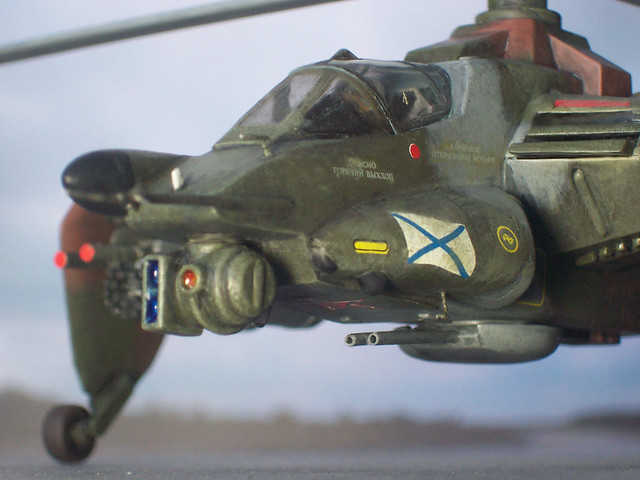 1:72 Russian Helicopters/Mil Mi-62K (NATO “Hepcat B”), aircraft “72 Red/RA-31098” of 125th OVP, Naval Aviation of the Baltic Fleet of Russia; Chkalovsk AB, 2015 (Whif/Kotobukiya kit conversion)
1:72 Russian Helicopters/Mil Mi-62K (NATO “Hepcat B”), aircraft “72 Red/RA-31098” of 125th OVP, Naval Aviation of the Baltic Fleet of Russia; Chkalovsk AB, 2015 (Whif/Kotobukiya kit conversion) by
dizzyfugu, on Flickr
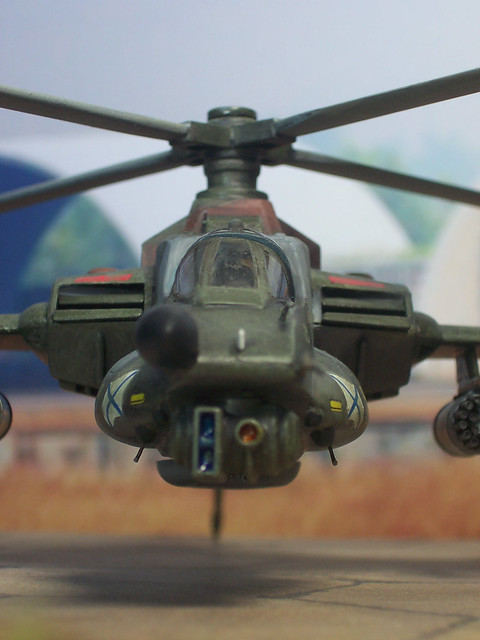 1:72 Russian Helicopters/Mil Mi-62K (NATO “Hepcat B”), aircraft “72 Red/RA-31098” of 125th OVP, Naval Aviation of the Baltic Fleet of Russia; Chkalovsk AB, 2015 (Whif/Kotobukiya kit conversion)
1:72 Russian Helicopters/Mil Mi-62K (NATO “Hepcat B”), aircraft “72 Red/RA-31098” of 125th OVP, Naval Aviation of the Baltic Fleet of Russia; Chkalovsk AB, 2015 (Whif/Kotobukiya kit conversion) by
dizzyfugu, on Flickr
The fire control system automatically shares all target information among the four Mi-62 of a typical flight in real time, allowing one helicopter to engage a target spotted by another, and the system can also input target information from ground-based forward scouts with personnel-carried target designation gear.
The Mi-62 was, after a lengthy development and constant lack of funds, eventually adopted for service in the Russian army in 2015. It is currently manufactured by the new Russian Helicopters company that was founded in 2009 in Moscow, and built at the Mil Moscow Helicopter Plant. It has been introduced to both Air Force (Mi-62 sans suffix, ‘Hepcat A’) and Naval Aviation (Mi-62K, ‘Hepcat B’) and is being used as a heavily armed attack helicopter against both ground and airborne targets.
The navalized Mi-62K derivative has been selected as the new ship-borne attack type for the Russian Naval Aviation (Aviatsiya Voenno-morskogo Flota Rossii). It will feature folding rotor blades and life-support systems for the crew, who will fly in immersion suits. The fuselage and systems will be given special anti-corrosion treatment and a new fire-control radar will be capable of operating in "Sea Mode" and of supporting anti-ship missiles. Aviatsiya Voenno-morskogo Flota Rossii will need no fewer than 20 Mi-62, which will be operated together with Ka-52Ks.
 1:72 Russian Helicopters/Mil Mi-62K (NATO “Hepcat B”), aircraft “72 Red/RA-31098” of 125th OVP, Naval Aviation of the Baltic Fleet of Russia; Chkalovsk AB, 2015 (Whif/Kotobukiya kit conversion)
1:72 Russian Helicopters/Mil Mi-62K (NATO “Hepcat B”), aircraft “72 Red/RA-31098” of 125th OVP, Naval Aviation of the Baltic Fleet of Russia; Chkalovsk AB, 2015 (Whif/Kotobukiya kit conversion) by
dizzyfugu, on Flickr
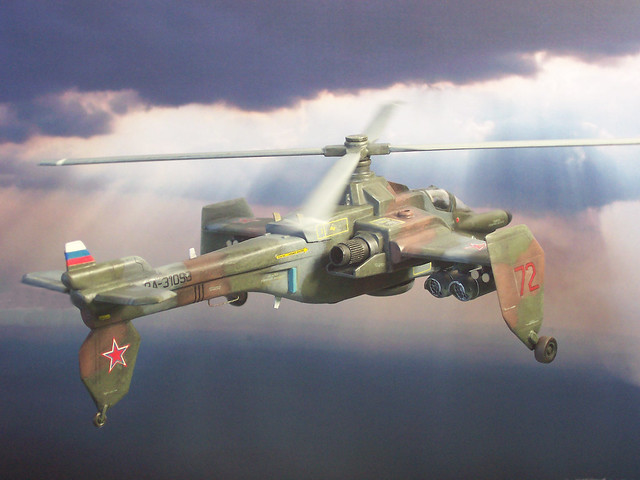 1:72 Russian Helicopters/Mil Mi-62K (NATO “Hepcat B”), aircraft “72 Red/RA-31098” of 125th OVP, Naval Aviation of the Baltic Fleet of Russia; Chkalovsk AB, 2015 (Whif/Kotobukiya kit conversion)
1:72 Russian Helicopters/Mil Mi-62K (NATO “Hepcat B”), aircraft “72 Red/RA-31098” of 125th OVP, Naval Aviation of the Baltic Fleet of Russia; Chkalovsk AB, 2015 (Whif/Kotobukiya kit conversion) by
dizzyfugu, on Flickr
The first Mi-62K is tentatively slated to enter squadron service by late 2014 or early 2015, coinciding with the delivery of the first carrier of the new Mistral class amphibious assault ships, ordered by the Russian Defense Ministry. These small carriers will contain rotary-wing assets, formed into aviation groups, and each of these groups is planned to include eight attack and eight assault/transport helicopters.[/i]
General characteristicsCrew: One
Length (fuselage only): 13,46 m (44 ft 1 in)
Rotor diameter: 15,40 m (50 ft 5 1/2 in)
Height: 4.60 m (15 ft 1 in)
Disc area: 186.3 m² (1.998 ft²)
Empty weight: 7,700 kg (17,000 lb)
Loaded weight: 9,800 kg / 10,400 kg (21,600 lb / 22,930 lb)
Max. takeoff weight: 10,800 kg (23,810 lb)
Powerplant2× Progress AI-222-25 turbofans, 24.52 KN (5.512 lbf) each plus
4× rotor tip jet burning compressed air/fuel, 4.4 kN (1,000 lbf) thrust each
PerformanceNever exceed speed: 550 km/h (297 knots, 342 mph) in dive
Maximum speed: 515 km/h (278 knots, 320 mph) in level flight
Cruise speed: 370 km/h (200 knots, 230 mph)
Range: 545 km (339 ml)
Combat radius: 800 km (500 ml)
Ferry range: 1400 km (870 ml) with 4 drop tanks
Service ceiling: 5,500 m (18,000 ft)
Rate of climb: 10.7 m/s (2,105 ft/min)
Armament1× turret-mounted, wtin-barreled 30 mm Shipunov Sh2A42 cannon (460 rounds total, dual feeding AP or HE-Frag) under the fuselage
6×wing hardpoints with a capacity of 2,000 kg and provisions to carry combinations of launch pods for 80 mm S-8 rockets or 122 mm S-13 rockets, APU-6 Missile racks or up to 20× 9K121 Vikhr anti-tank missiles, 6× Vympel R-73 (NATO: AA-11 Archer) air-to-air missiles, Kh-25 semi-active laser guided tactical air-to-ground missiles, 4× 250 kg (550 lb) bombs or 2x 500 kg (1,100 lb) bombs, plus 23 mm UPK-23-250 gun pods (240 rounds each) or 500 l (130 US gal) external fuel tanks.
Two compartments in the lower fuselage with flare and chaff countermeasure dispensers, typically 4× UV-26 dispensers each (total 512 chaff/flare cartridges in each pod)
Und zum Schluss noch ein paar Gesamt- und Detailansichten
 1:72 Russian Helicopters/Mil Mi-62K (NATO “Hepcat B”), aircraft “72 Red/RA-31098” of 125th OVP, Naval Aviation of the Baltic Fleet of Russia; Chkalovsk AB, 2015 (Whif/Kotobukiya kit conversion)
1:72 Russian Helicopters/Mil Mi-62K (NATO “Hepcat B”), aircraft “72 Red/RA-31098” of 125th OVP, Naval Aviation of the Baltic Fleet of Russia; Chkalovsk AB, 2015 (Whif/Kotobukiya kit conversion) by
dizzyfugu, on Flickr
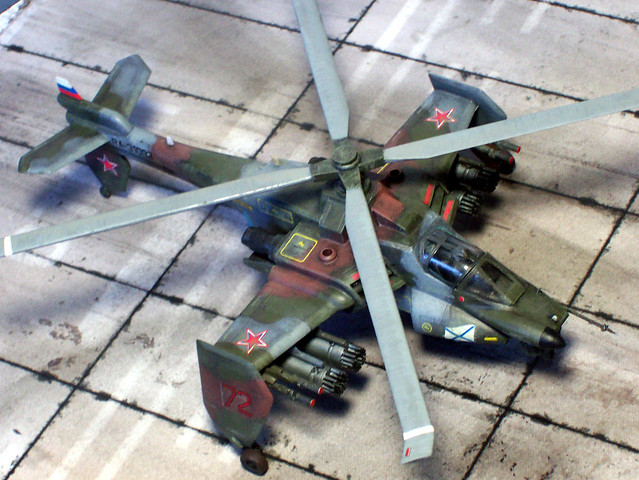 1:72 Russian Helicopters/Mil Mi-62K (NATO “Hepcat B”), aircraft “72 Red/RA-31098” of 125th OVP, Naval Aviation of the Baltic Fleet of Russia; Chkalovsk AB, 2015 (Whif/Kotobukiya kit conversion)
1:72 Russian Helicopters/Mil Mi-62K (NATO “Hepcat B”), aircraft “72 Red/RA-31098” of 125th OVP, Naval Aviation of the Baltic Fleet of Russia; Chkalovsk AB, 2015 (Whif/Kotobukiya kit conversion) by
dizzyfugu, on Flickr
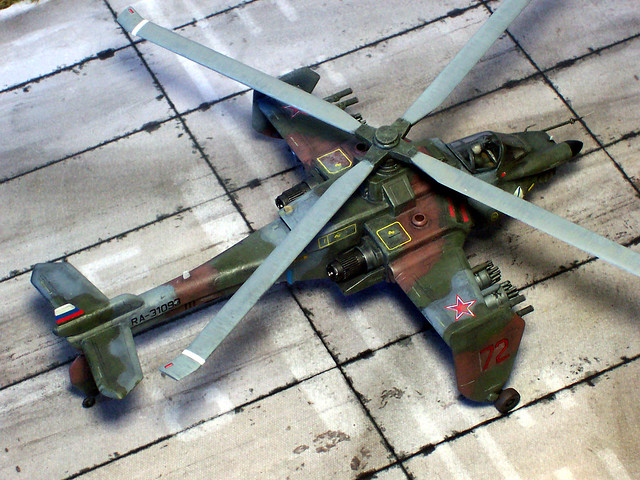 1:72 Russian Helicopters/Mil Mi-62K (NATO “Hepcat B”), aircraft “72 Red/RA-31098” of 125th OVP, Naval Aviation of the Baltic Fleet of Russia; Chkalovsk AB, 2015 (Whif/Kotobukiya kit conversion)
1:72 Russian Helicopters/Mil Mi-62K (NATO “Hepcat B”), aircraft “72 Red/RA-31098” of 125th OVP, Naval Aviation of the Baltic Fleet of Russia; Chkalovsk AB, 2015 (Whif/Kotobukiya kit conversion) by
dizzyfugu, on Flickr
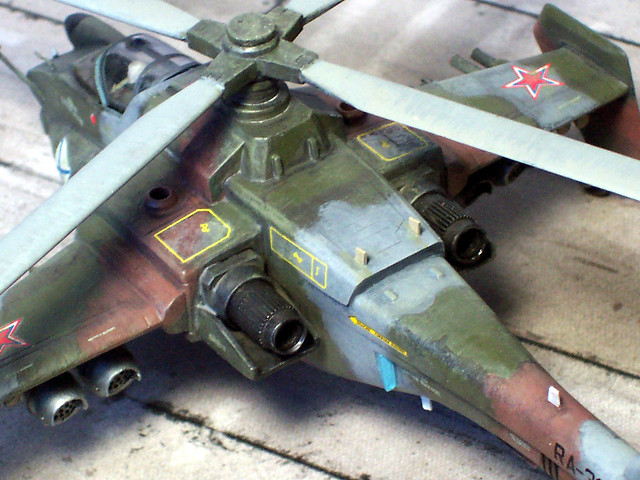 1:72 Russian Helicopters/Mil Mi-62K (NATO “Hepcat B”), aircraft “72 Red/RA-31098” of 125th OVP, Naval Aviation of the Baltic Fleet of Russia; Chkalovsk AB, 2015 (Whif/Kotobukiya kit conversion)
1:72 Russian Helicopters/Mil Mi-62K (NATO “Hepcat B”), aircraft “72 Red/RA-31098” of 125th OVP, Naval Aviation of the Baltic Fleet of Russia; Chkalovsk AB, 2015 (Whif/Kotobukiya kit conversion) by
dizzyfugu, on Flickr
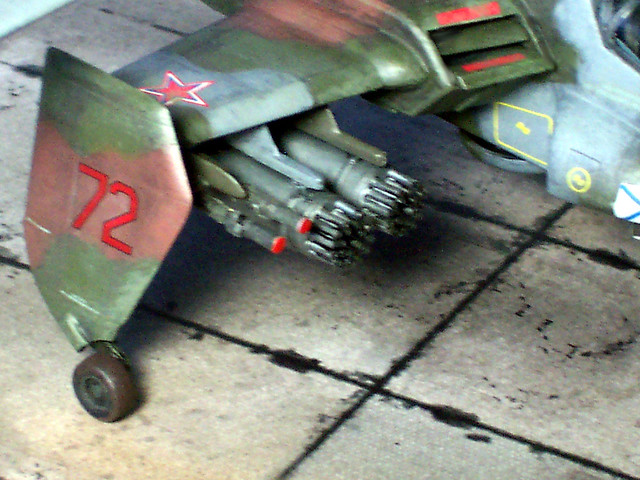 1:72 Russian Helicopters/Mil Mi-62K (NATO “Hepcat B”), aircraft “72 Red/RA-31098” of 125th OVP, Naval Aviation of the Baltic Fleet of Russia; Chkalovsk AB, 2015 (Whif/Kotobukiya kit conversion)
1:72 Russian Helicopters/Mil Mi-62K (NATO “Hepcat B”), aircraft “72 Red/RA-31098” of 125th OVP, Naval Aviation of the Baltic Fleet of Russia; Chkalovsk AB, 2015 (Whif/Kotobukiya kit conversion) by
dizzyfugu, on Flickr
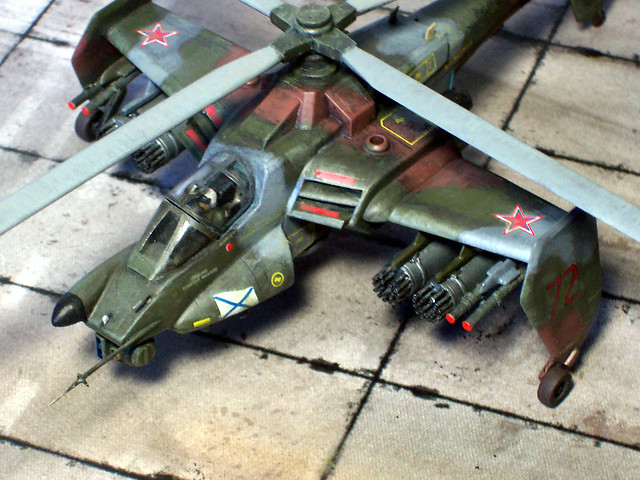 1:72 Russian Helicopters/Mil Mi-62K (NATO “Hepcat B”), aircraft “72 Red/RA-31098” of 125th OVP, Naval Aviation of the Baltic Fleet of Russia; Chkalovsk AB, 2015 (Whif/Kotobukiya kit conversion)
1:72 Russian Helicopters/Mil Mi-62K (NATO “Hepcat B”), aircraft “72 Red/RA-31098” of 125th OVP, Naval Aviation of the Baltic Fleet of Russia; Chkalovsk AB, 2015 (Whif/Kotobukiya kit conversion) by
dizzyfugu, on Flickr
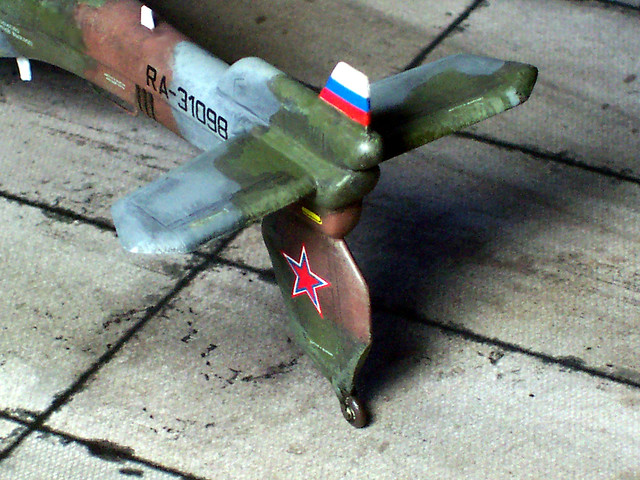 1:72 Russian Helicopters/Mil Mi-62K (NATO “Hepcat B”), aircraft “72 Red/RA-31098” of 125th OVP, Naval Aviation of the Baltic Fleet of Russia; Chkalovsk AB, 2015 (Whif/Kotobukiya kit conversion)
1:72 Russian Helicopters/Mil Mi-62K (NATO “Hepcat B”), aircraft “72 Red/RA-31098” of 125th OVP, Naval Aviation of the Baltic Fleet of Russia; Chkalovsk AB, 2015 (Whif/Kotobukiya kit conversion) by
dizzyfugu, on Flickr